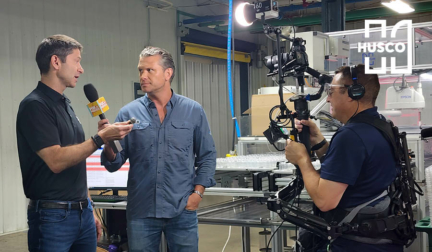Fluid Power: NFPA Works to Quantify Energy Usage
A quad is a term used by the Department of Energy (DOE) to quantify energy. It refers to a quadrillion BTUs. The United States consumes 100 quads every year, and each quad costs industry and consumers $20 billion. The DOE has quantified where this energy comes from and where it goes in a general sense, but no one knows specifically how much of this energy is used to drive fluid power systems in all its many applications.
No one, that is, until now.
The DOE’s Industrial Technology Program (ITP) office recently contracted Oak Ridge National Laboratory (ORNL) to lead an investigation focused on how much energy is consumed by fluid power systems’ and ORNL is working with the National Fluid Power Assn. (NFPA) to help answer this question. The ultimate goal of the research is show the extent to which efficiency improvements might result in substantial energy savings.
“When we look at the national initiatives that focus on saving energy, not much attention is given to fluid power,” says Eric Lanke, executive director, NFPA. “People on the Hill aren’t all that familiar with the technology or the industry. They do not have an appropriate understanding of how much energy this industry has the ability to affect.”
Due to the very nature of the industry, the study will have a broad scope. NFPA represents both hydraulics and pneumatics specialists working with everything from factory automation to off-highway vehicles, and many of its member companies are contributing data to the project.
“The information each company brings to the table will fill in gaps, and help us determine energy consumption and efficiency for major segments of the market,” says Peter Alles, director of association services and development, NFPA. “By covering a number of important applications and markets, we’ll be able to apply those statistics across the fluid power industry.”
More than 20 NFPA member companies are involved with the project, including Husco Intl., Waukesha, WI.
As part of ongoing development work with its INCOVA hydraulic control system, Husco had been performing baseline efficiency testing on a variety of different mobile off-highway equipment.
“There are many efficiency trends we can glean from our testing, and so it was timely that we had non-customer specific information we could share with NFPA,” says Joe Pfaff, vice president Corporate Development Engineering, Husco. “The average application efficiencies from those tests are the big take-aways from the confidential testing we had performed. NFPA works as the confidential aggregator of that information, which is also coming from our competitors and customers, to make as complete a picture of hydraulic energy consumption as possible.”
Information examples include:
- Number of systems currently in use industry-wide or for specific markets/applications
- Energy typically consumed (gal/hr or kw/hr) per system
- Average yearly use (hr/year)
- Energy consumed per application to drive the fluid power system (%)
– (for example, what percent of the diesel fuel consumed by an excavator is used to drive the hydraulic systems) - Current system efficiency (%)
NFPA plays critical role in compiling the data from its members, many of which are sharing proprietary information. “That might be one of the reasons why such a study has never been attempted before,” says Lanke. “It requires an aggregation of data, and an honest broker to compile it. NFPA will keep the information confidential. The final report won’t release specific information about specific projects; that’s not what we want. We want to show how it all adds together for the bigger picture.”
With the survey expected to be completed later this year, ORNL and NFPA will have a firm understanding of the fluid power industry’s size
and role in helping the nation address future energy concerns.
One potential that exists is for DOE investment in fluid power efficiency research. Another is to develop programs that promote more
efficient uses of fluid power. There are government-funded programs for many consumer-related products, such as Energy Star. “But while our industry’s power consumption is a significant number,” says Pfaff, “there are no programs I know of that encourages or rewards efficiency performance for mobile off-highway machines. The market mechanisms don’t exist, but the opportunities for differentiation and improved hydraulic efficiencies are huge.”
Think of the U.S. Environmental Protection Agency’s (EPA) SmartWay Transport Partnership’s list of verified fuel savings technologies for
on-highway trucks, or the joint EPA and DOE Energy Star program. According to Energy Star, in 2009 Americans saved enough energy to avoid greenhouse gas emissions equivalent to those from 30 million cars – while saving nearly $17 billion on their utility bills.
Those are the kind of statistics that could result from the study, as fluid power’s many industries work to create more competitive and
energy efficient products.
NFPA has reached out to its members for help in completing the study. It is particularly interested in hearing from readers of OEM Off-Highway who are in the agricultural sector. Contact Peter Alles (www.nfpa.com) for more information.



